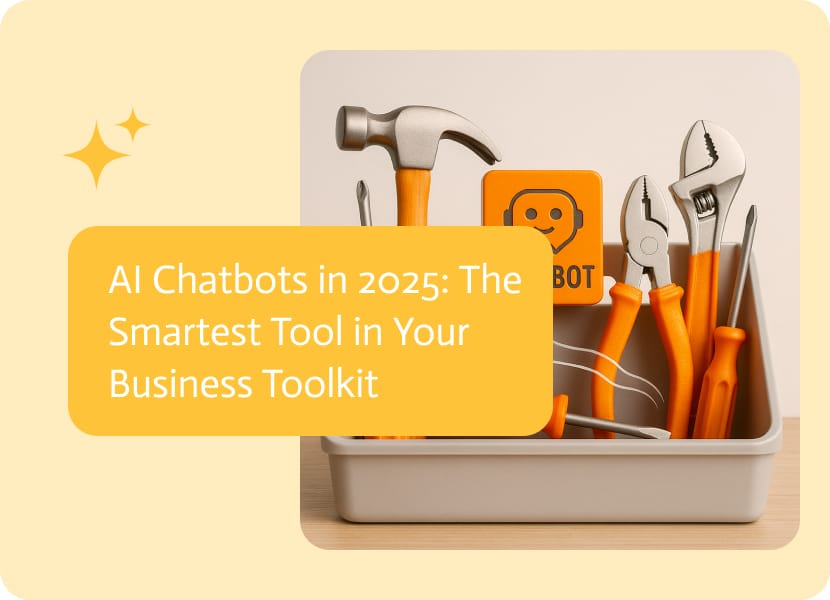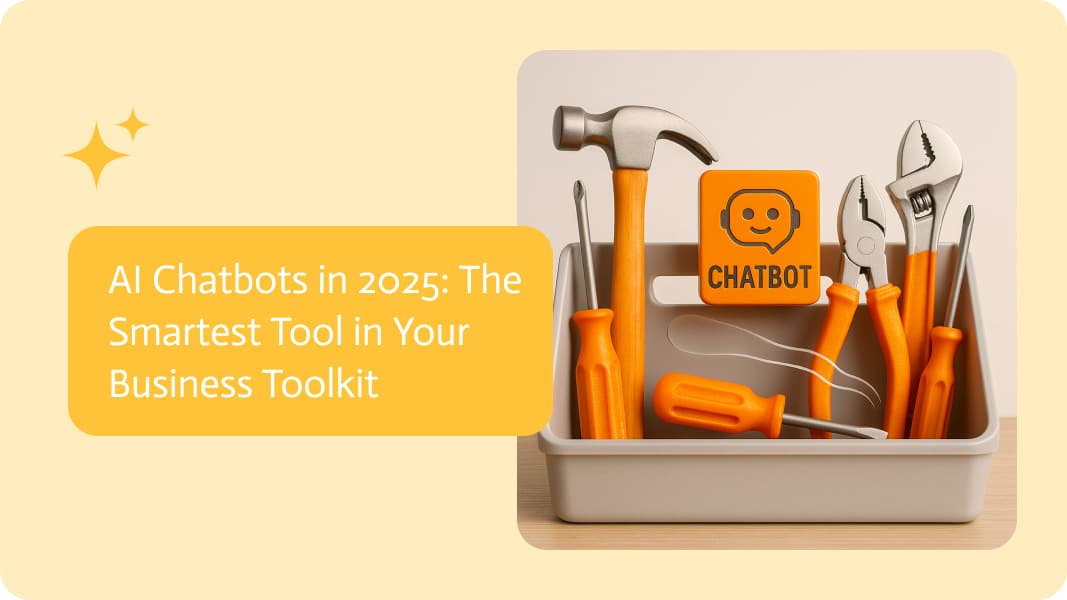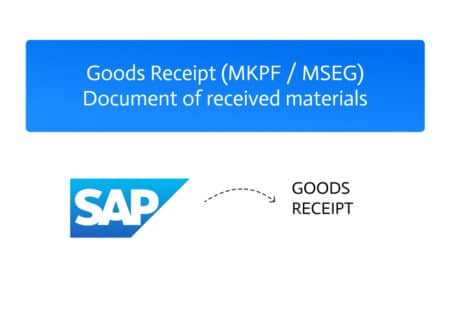

AI Chatbots in 2025: The Smartest Tool in Your Business Toolkit
AI chatbots sure have evolved since the clunky, one-size-fits-all pop-ups we saw a decade ago. By 2025 they’re doing much more than answering FAQs: they’re boosting sales, speeding up back-office tasks, helping staff, and tailoring customer journeys for thousands of people at once.
If you run a small business, manage social media, or just take an interest in tech, this article will explain exactly what chatbots are, the smart tools behind them, the places businesses are using them, and why skipping on this trend could leave you in the dust.
What Is an AI Chatbot?
An AI chatbot is a computer program that talks to you through text or voice, using artificial intelligence to make the chat feel less robotic. Unlike older bots that follow stiff scripts and can only respond to exact keywords, today’s AI chatterboxes tap into natural language processing, machine learning, and huge language models to figure out what you really mean and answer on the fly.
Because of this tech, AI bots can sense intent, remember context, and reply in a way that sounds more like talking with a person than reading a pre-made card. They learn from each conversation, getting smarter and more helpful over time, so customers end up enjoying the chat rather than feeling stuck in a loop.
You may run across several names for these helpers:
- Conversational AI assistants
- Virtual customer agents
- Intelligent virtual assistants
- Generative AI chatbots.
Even with all the titles, they do basically the same job: providing quick, friendly support that works around the clock with little human oversight.
How AI Chatbots Work: Behind the Scenes
Learning what goes on behind the curtain makes it easier to see why chatbots have taken off. Here’s a simple breakdown of the main parts that keep these digital helpers running:
- Natural Language Understanding (NLU)
First, the system tries to figure out what you really mean. Through NLU, the chatbot picks apart your message to spot intent-the goal behind your words-and entities-specific names, dates, or numbers you mention. By doing that, it can choose an action instead of just playing word bingo.
- Response Generation
After grabbing your meaning, the bot needs to pick an answer. It usually does that in one of two ways:
Retrieval-based responses: Here the bot hunts its library for the closest pre-written reply.
Generative responses: With models like GPT-4 or Claude, the bot builds a fresh, context-aware answer from scratch in real time.
Generative AI shines in situations where the questions people ask come in many shapes and sizes or when the details are complicated or surprising.
- Backend Integration
Modern AI chatbots don’t just talk-they do things. By plugging into back-end systems like CRMs, calendars, databases, and automation tools such as Noca, they can:
- Book or change appointments
- Process product returns
- Update customer account details
- Trigger workflows (e.g., send emails, assign tickets, notify staff)
Because of this ability they go beyond convenience to real operational value, taking on repeat tasks so human agents can spend their time on strategy and problem-solving.
Industries Where AI Chatbots Are Making the Biggest Impact
Chatbots are now popping up in almost every industry, and their effects are remarkably far-reaching. From speeding up customer service to improving employee experiences and personalizing lessons for students, these tools are showing they are much more than simple virtual helpers.
Customer Support
In customer support, AI chatbots are already handling Level 1 service jobs with speed and accuracy. They reset passwords, run basic troubleshooting checks, deliver instant order updates, and pass tricky cases to live agents when needed. This approach cuts wait times and lets human teams focus on higher-value conversations.
E-Commerce and Retail
AI chatbots are lifting conversion rates and cutting cart abandonment. By recommending products that match a shopper’s recent browsing or past buys, answering sizing and stock questions, and handling return requests or shipping updates, they help customers decide more quickly and with greater confidence.
Healthcare and Telemedicine
In healthcare and telemedicine, virtual health assistants are taking over repeating admin tasks and giving patients a friendlier way to connect. These chatbots book and change appointments, shoot out medication reminders, answer insurance questions, and even run simple symptom checks-first saving people time, then freeing up doctors and nurses to focus on care.
HR and Internal Communications
For HR and internal communications, AI chatbots start improving the employee experience from the moment someone signs their offer letter. They walk new hires through paperwork, explain company policies, and provide instant answers to everyday questions, so teams can scale faster and spend less time on routine tasks that slow them down.
Education and EdTech
AI-powered tutoring bots open whenever students need help, popping up on phones or laptops like a smart study buddy. They assist with homework, serve up interactive quizzes, and break down tough topics in plain language, giving learners 24/7 support no matter what grade or subject they’re tackling.
Finance and Insurance
In finance and insurance-where every detail counts-AI chatbots handle everything from balance checks and quick transaction summaries to fraud alerts and clear policy breakdowns. This level of automation speeds up service, cuts back on errors, and makes sure customers always get accurate, up-to-date information when they reach out.
Key Features of a Modern AI Chatbot
To stand out in today’s fast-moving online world, a good AI chatbot needs to be more than just friendly text on a screen; it has to be smart, adaptable, and dependable. Here are the features that set a real modern chatbot apart:
Multilingual Support
Today’s businesses connect with people around the globe, so chatbots need to talk in many languages. When a bot can reply in a user’s native tongue, it makes the service more welcoming and easier to understand.
Voice Integration
Smart speakers and voice-first gadgets are everywhere now. Adding voice lets users ask questions and get answers hands-free, which is great for car rides, busy kitchens, or anytime typing isn’t practical.
Multi-Turn Memory
Remembering what was said earlier makes a conversation feel human. Modern bots keep context through several exchanges, so users don’t have to repeat themselves every time they return.
Omnichannel Presence
People switch between websites, social apps, and messaging tools like WhatsApp or Slack during the day. A true omnichannel bot gives the same helpful replies no matter where the chat starts, keeping the experience smooth.
Custom Workflows
Today’s chatbots also take care of internal chores—filling out forms, booking meetings, or sending alerts across different apps. By handling these tasks automatically, they become valuable team members, not just conversation partners.
Analytics Dashboard
Data is everything. The best chatbots come with built-in analytics to track engagement, conversation quality, and user behavior, giving businesses the insights they need to continuously improve user experience and ROI.
Platforms like Noca.ai offer these features out of the box, allowing even non-developers to build and deploy enterprise-grade AI chatbots.
The Role of Noca in AI Chatbot Development
Noca is a no-code AI development platform that makes chatbot creation accessible to anyone. Its simple interface is especially ideal for small teams, solopreneurs, and internal departments that want results fast without hiring an extra coder.
Key capabilities include:
- Drag-and-drop workflow builder
- Natural-language prompt system to design conversational flows
- Pre-trained chatbot templates for sales, support, HR, and more
- Easy API integration with Google Sheets, CRMs, email, Slack, etc.
- Built-in automation to trigger actions from user conversations
Instead of spending weeks coding an assistant, you can now launch a smart chatbot in a few hours, with zero engineering background. Still not fast enough for you? Why not just make use of Noca’s chatbot that complete and ready to go?
Are Chatbots Worthy of The Hype?
So, are AI chatbots really all that great? Turns out, companies using them are getting ahead. Think about it: around-the-clock customer help without paying extra for staff working at night. You won’t miss out on potential customers or leave anyone waiting.
AI chatbots cut support costs because they can handle thousands of questions in seconds and still sound like a real person. Because they never log off, they turn casual site visitors into loyal customers by offering fast, friendly help around the clock.
Want to solve issues even quicker? Chatbots reply instantly, shaving down wait times and keeping customers happy.
What’s Next? The Future of AI Chatbots
The chatbot landscape is evolving fast. Here are a few trends shaping the next generation of conversational AI:
- Emotionally aware bots: Recognizing user frustration, excitement, or confusion.
- Autonomous AI agents: Not just chatting, but completing complex tasks independently.
- Cross-platform memory: Bots that remember you across devices and apps.
- Industry-specific marketplaces: Buy or customize bots tailored to real estate, healthcare, law, etc.
AI chatbots won’t just assist, they’ll become active collaborators in your workflows.
Conclusion: Why You Shouldn’t Wait
AI chatbots have shifted from novelty to necessity. Whether you’re running an e-commerce store, managing a service team, or handling internal workflows, there’s a chatbot that can take repetitive tasks off your plate.
And thanks to user-friendly platforms like Noca.ai, building a fully functional AI chatbot no longer requires engineering know-how or a six-figure budget. In short, AI chatbots are the most powerful, scalable, and approachable tool in the modern digital toolbox, and 2025 is the year to start taking them seriously.


